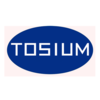高致密細晶W-25Cu觸頭材料的電接觸性能高致密細晶W-25Cu觸頭材料的電接觸性能Performances of high-density fine-grain W-25Cu electrical contact materials 由水熱-共還原法制備出的原位共生W-25Cu復合粉末,經冷等靜壓、真空熱壓聯合包套擠壓工藝獲得相對密度大于98%,導電率為42.7%IACS,硬度為246HB的高致密細晶W-25Cu電觸頭材料。材料顯微組織中W相和Cu相分布均勻,顆粒細小(1~3 μm)。在JF04C型電接觸試驗機上進行電接觸實驗,研究其在直流、阻性負載條件下的電接觸性能。結果表明:提高鎢銅合金致密度、細化晶粒可以減小并穩定接觸電阻;燃弧時間和燃弧能量均隨電壓的增大而增大,分斷過程燃弧能量和燃弧時間均小于閉合過程燃弧時間和能量。W-25Cu電觸頭材料經電侵蝕后,材料表面主要由Cu、W和WO3三相組成。電接觸過程中發生的材料轉移以熔橋轉移、電弧轉移和噴濺蒸發等形式為主;隨著電壓的增大,發生材料轉移方向的轉變,即由陰極轉移變為陽極轉移。 The W-25Cu electrical contact material was fabricated by cold isostatic pressing process, presintering in vacuum and hot extrusion of W-Cu nanocomposite powders that was made by hydrothermal synthesis combined with co-reduction method. The relative density of W-25Cu electrical contact materiel is above 98%, the conductivity reaches 42.7%IACS, and the hardness is 246HB. The distribution of W phase and Cu phase are uniform and the particle size of W phase is fine (1-3 μm). The arc tests were carried out under DC and resistance load conditions through JF04C electrical material testing system. The results show that increasing the density and decreasing the grain size of tungsten copper alloy can reduce and stabilize the contact resistance. Arc time and energy increase along with the increasing of voltage, and the arc time and energy of break operation are less than that of make operation. The surface material mainly compose of Cu, W and WO3 phases of W-25Cu electrical contact materials after being eroded. Melting bridge transfer, arc transfer and spray evaporation are mainly transfer forms, and the material transfer direction changes with the increasing of voltage, namely, the mass loss transfers from cathode to anode. 全文下載:http://pan.baidu.com/s/1dFd2VJV
|







